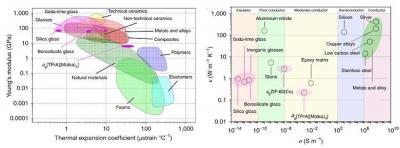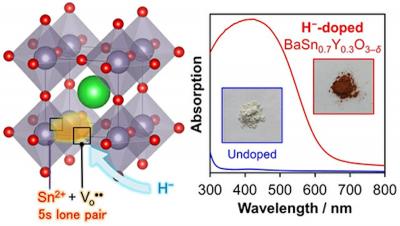Researchers from the University of Cambridge, University of Liverpool, CNRS, Indian Association for the Cultivation of Science and Diamond Light Source have shown the by melting and quenching hybrid organic'inorganic perovskite compounds, it is possible to create a new family of glasses that could find uses in the energy sector.
 Comparison of physical properties of melt-quenched glasses with various materials. Image from study
Comparison of physical properties of melt-quenched glasses with various materials. Image from study
The research team made three hybrid organic'inorganic perovskite compounds based on tetrapropylammonium with manganese(II), iron(II) and cobalt(II) and melted them. According to author François-Xavier Coudert at the CNRS in France, they had to tune the temperature to aim for a very narrow temperature window, around 20 degrees on average, depending on each metal used ' hot enough to liquefy the samples, but not so hot that it decomposes them. The team measured the exact heat coming in and out of the glasses to learn their properties, describing each one thoroughly. 'We're melting a novel class of materials and accessing a novel family of glasses,' Coudert says. 'I've probably never seen materials so well characterized with so many techniques and so much information. It is fascinating to see all of these methods together.'




